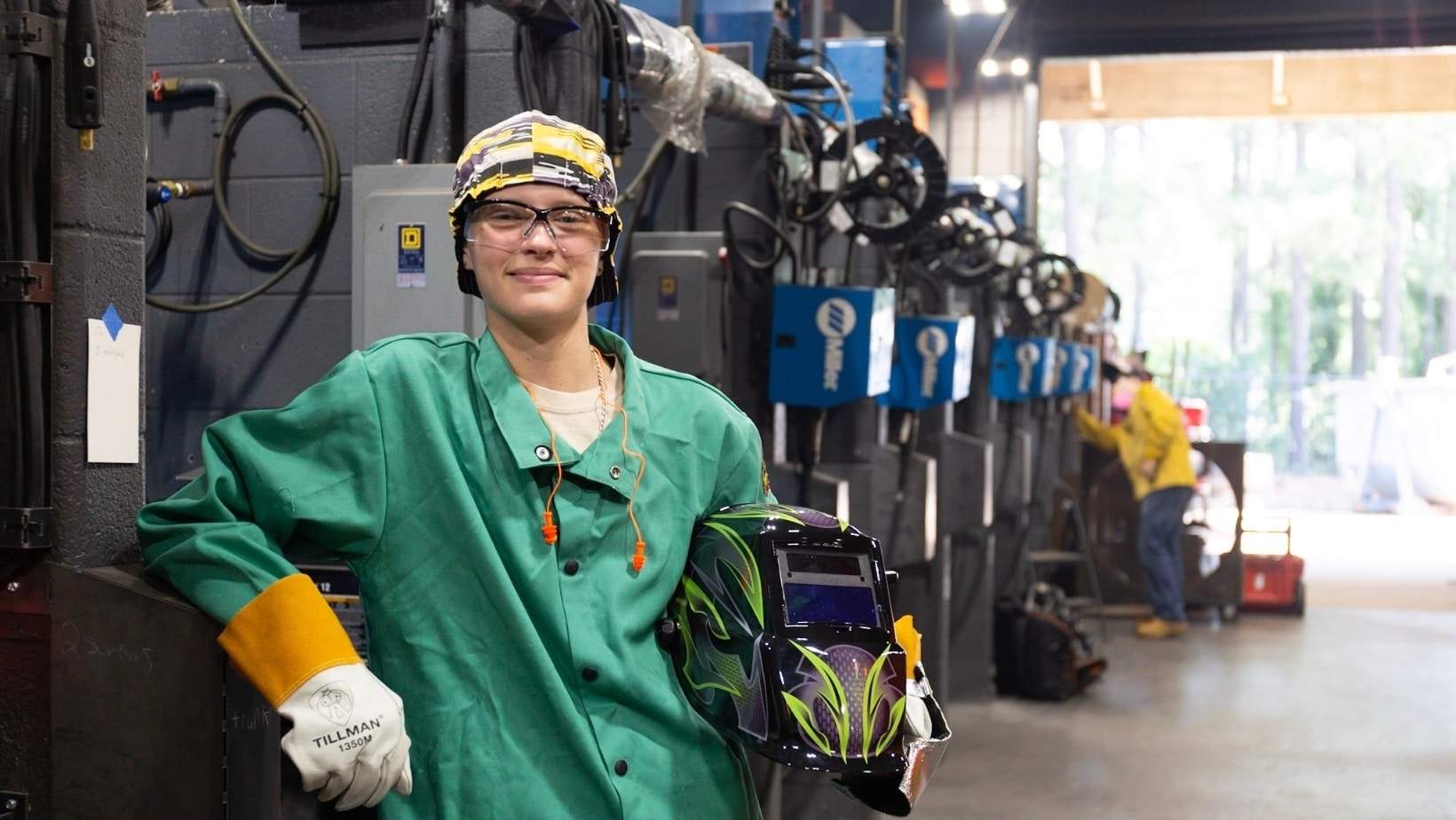This article discusses CRNA Vs Anesthesiologist: Job Description, Outlooks, Salary, and Programs.
Helping and saving patients’ lives through painful medical procedures and you want to take a role in administering anesthesia is a good and amazing career. But, there is a question about which option to settle down for regarding your dream career.
CRNA or Anesthesiologist are the two main options for this particular field of career. So, it will be best if we show you the differences and job descriptions between CRNA vs Anesthesiologist.
As you read on, you see the difference between the two options, their job descriptions, and everything you need to know about CRNA and Anesthesiologists, and you can choose the one that best suits you. So, relax and carefully read through the article.
So, before we continue, let’s go through the table of content below to get an overview of what the article entails.
Table of contents
- Who Are CRNA And Anesthesiologists?
- What Are The Job Description for An Anesthesiologist And CRNA?
- Where Do CRNA And Anesthesiologists Work?
- Job Outlooks Of CRNA And Anesthesiologists
- What Are The Salaries Of CRNA And Anesthesiologists?
- What Are The Anesthesiology And CRNA Programs?
- How Long Is CRNA Program?
- How Long Does It Take To Become An Anesthesiologist?
- CONCLUSION
- FAQ’s
- REFERENCE
- RECOMMENDATION
Who Are CRNA And Anesthesiologists?
CRNA in full is a Certified Registered Nurse Anesthetist. The practice of anesthesia is a recognized specialty within nursing, and nurse anesthetists are essential to the healthcare workforce.
The Certified Registered Nurse Anesthetist (CRNA) administers anesthesia for all surgical cases, from the simplest to the most complex.
However, a nurse anesthetist gives anesthesia and related health care before or after surgery therapeutic, diagnostic, and obstetrical procedures. They also provide pain management and emergency services, such as airway management.
An anesthesiologist is a medical doctor who practices anesthesia. While anesthesiologists are physicians in perioperative care, forming anesthetic plans and administering anesthetics.
However, Anesthesiologists help ensure the safety of patients undergoing surgery. The anesthesiologist provides care for the patient to prevent the pain and distress they would otherwise experience, like general anesthesia, sedation, or regional anesthesia.
Read: Geography vs Geology: Job Description, Outlook, Salary, Schools.
What Are The Job Description for An Anesthesiologist And CRNA?
An anesthesiologist and CRNA’s job description is vital in ensuring their patients are free from pain before or after medical procedures or surgery.
Job Description An Anesthesiologist
Physicians’ anesthesiologists meet with you and your surgeon before surgery to check your health and make decisions to ensure your anesthesia care is as safe and effective as possible.
They monitor your vital signs during surgery, like knowing how well your heart and lungs work while you’re unconscious.
Also, they take care of you after surgery to ensure you’re as comfortable and healthy as possible while recovering.
In addition, anesthesiologists play a key role in caring for patients who are having minor surgery or may not require general anesthesia.
For instance, some women in labor need to be awake and alert but require effective pain management.
They also help patients in serious pain from an injury or chronic or recurring pain like migraines or back problems.
Job Description Of A CRNA
A Certified Registered Nurse Anesthetist(CRNA)is an advanced practice registered nurse whose primary responsibilities are working with patients before, during, and after medical procedures to ensure they’re pain-free.
By so doing, they will know the amount and type of anesthesia needed in general, locally, or region and the method for administering anesthesia, including options like injections, inhalants, or oral medication.
Also, some CRNAs work within a broader scope, while others specialize in particular subfields such as obstetrics, pediatrics, cardiovascular, neurosurgery, and more.
The role of a CRNA might vary depending on the setting where he or she works, but all CRNAs work directly with patients, families, and medical staff.
Also, CRNAs can work as part of a team under the supervision of doctors, while some can work independently depending on the state’s law.
Some of the job responsibilities of a CRNA are:
- Providing the patient with education about the surgery and their recovery
- Preparing the proper dose of anesthetic to meet the patient’s needs
- Monitoring the patient’s vitals and anesthesia dose during surgery
- Overseeing the patient’s safety during anesthesia recovery
- Working with other medical staff to develop pain management programs
- Making changes as needed to anesthesia levels during the procedure
Where Do CRNA And Anesthesiologists Work?
CRNAs and anesthesiologists can work in different medical fields and setting like
- Traditional hospitals
- Physicians’ offices
- Surgical centers
- Dental offices
- Pain management specialists
- U.S. military facilities
- Public health centers
- Universities and colleges
Job Outlooks Of CRNA And Anesthesiologists
For those interested in pursuing healthcare careers, you can choose from a wide variety of options. And some of the options seem similar. For example, a nurse anesthetist and anesthesiologist. The differences between these two are pretty similar and unique.
However, The major difference between these two professions is that anesthesiologists are medical doctors administering anesthesia.
While nurse anesthetists are registered nurses who may assist or collaborate with doctors in administering anesthesia or work independently as they administer anesthesia.
Also, read: Bioengineering Vs. Biomedical Engineering: Job Description, Salary, Schools, Cost.
Job Outlook For CRNAs
Working directly with patients to ensure their comfort and safety can be incredibly fulfilling. Furthermore, The demand for nurse anesthetists is expected to grow 26% by 2028, much faster than average job growth.
The field is seeing high demand as medical practices advance and more surgical, and pain management options become available.
Furthermore, there is a nursing shortage around the country, meaning highly trained nurses like nurse anesthetists are difficult to come by.
Job Outlook Of Anesthesiologists
The job outlook for anesthesiologists is 15% growth by 2026. So, this doubles the pace of the national average for job outlook.
As healthcare needs continue to grow, as medical procedures and surgeries become safer and a good option for healing, anesthesiologists will continue to be in high demand.
What Are The Salaries Of CRNA And Anesthesiologists?
Nurse anesthetists are one of the highest-paying jobs for nurses. This is largely due to the high skill set certified registered nurse anesthetists need to do this specific nursing job well.
However, Nurse anesthetists are highly trained and skilled, which means they are well-compensated. CRNAs can expect an average annual salary of about $174,000 or $84 per hour, which is much, much higher than the national average salary.
The location where you work, the nursing education you have, and your nursing experience will greatly influence your average salary as a CRNA.
Anesthesiologists, as medical doctors, have amazingly high pay. They earn an average annual salary of $267,000 or $128 per hour. Doctors generally have much higher pay than the national average because of all the extensive schooling and training they require.
The location where you work and your experience will directly impact how much you can make as an anesthesiologist.
You can check this. How can I become a Psychiatrist? Schools, Career, Cost & Salary
What Are The Anesthesiology And CRNA Programs?
As an anesthesiologist, you’ll manage patients rendered unconscious or insensible to pain and stress during various medical procedures, including surgeries and obstetric interventions.
It’s important to note that most medical students won’t be exposed to anesthesiology until their fourth year in medical school. If you are interested in anesthesiology, look for medical schools or universities that will get you that exposure early on or give you access.
List Of Anesthesiology And CRNA Programs
- Columbia University
- Harvard University
- Johns Hopkins University
- Stanford University
- University Of California, Los Angeles
- The University Of California, San Francisco
- The University Of Michigan Ann Agbor
- University of Pennsylvania
- Washington University, St Louis
Columbia University
Columbia University Vagelos College of Physicians and Surgeons (VP&S) is the graduate medical school of Columbia University, located at the Columbia University Irving Medical Center in Washington Heights, Manhattan.
Founded in 1767, the College of Physicians and Surgeons was the first medical school in the United States to award the Doctor of Medicine (M.D.) degree.
VP&S strives to be the best by consistently focusing on its top four goals: clinical care, research, education, and campus and community life.
The college offers degrees in various medical and healthcare fields and 7 dual-degree programs, providing students with ample opportunity to learn and succeed.
Students are encouraged to develop their interests and acquire important career skills through electives, scholarly projects, extracurricular activities, and independent research.
Harvard University
Harvard Medical School (HMS) is the graduate medical school of Harvard University in Boston, Massachusetts.
Founded in 1782, HMS has an esteemed history, and its faculty have been at the forefront of major medical discoveries and innovations.
With a class size of 165, the MD program is highly competitive, with a median matriculant GPA of 3.9 and a median MCAT score of 519.
Harvard medical students enrolled in the Core Clerkship in Surgery will spend at least one week rotating with the anesthesia department in a hospital setting.
There is also an opportunity for a four-week elective clinical clerkship in anesthesiology for fourth-year medical students. In 2019, 6 Harvard Medical School students were matched into anesthesiology residency programs.
Johns Hopkins University
Founded in 1876, The Johns Hopkins University School of Medicine is located in Baltimore, Maryland, sharing its campus with Johns Hopkins Hospital, established in 1889.
It is part of the Johns Hopkins Medical Institutions (JHMI) Campus, including the Johns Hopkins Bloomberg School of Public Health and the School of Nursing.
Johns Hopkins was the first medical school to require its students to have an undergraduate degree and the first to admit women.
A historically standout institution, the school has always ranked in the top 3 according to U.S. News and World Report in the number of competitive research grants awarded by the National Institutes of Health (NIH).
Also, read: Medical Transcriptionist Job Description: Careers, Salary, Cost, Schools
Stanford University
Founded in 1858 by Dr. Elias Samuel Cooper, Stanford Medicine boasts the country’s highest funding per researcher ratio today. Stanford Medicine consistently ranks among the top medical schools in the country.
As part of the Critical Care Core Clerkship, medical students at Stanford gain exposure to a variety of anesthesiology practices.
Students also get to participate in patient management in the operating room and have an opportunity to experience many clerkships in subspecialty areas.
University Of California, Los Angeles
The David Geffen School of Medicine is one of the youngest elite medical schools in the United States, founded in 1951.
It is the second medical school in the University of California system—the first was the UCSF School of Medicine. The school’s reputation relative to its age is a testament to its strength.
The anesthesiology department at UCLA Medical School oversees the preoperative care of about 50,000 surgeries and procedures, and over 200 third- and fourth-year medical students complete anesthesiology rotations each year.
Each student spends two weeks of the mandatory third-year surgery clerkship in the anesthesiology subspecialty rotation. Interested students can choose from two fourth-year sub-internships: one in anesthesiology and one in surgery and critical care medicine. Also, you’ll likely need a top MCAT score to compete.
The University Of California, San Francisco
The UCSF School of Medicine is located in San Francisco, California, and is the University of California San Francisco medical school.
The school was founded in 1864 as Toland Medical College and joined the UC system in 1873. It’s affiliated with UCSF Medical Center, and students train at the seven hospitals that make up UCSF Health.
However, students can also take advantage of opportunities at 12 affiliated hospitals and organizations in the Bay Area and Fresno, including Children’s Hospital Oakland, the Priscilla Chan and Mark Zuckerberg San Francisco General Hospital, and the San Francisco VA Medical Center. UCSF School of Medicine is the oldest medical school in California.
In addition to training medical professionals, UCSF School of Medicine holds at its core a large focus on research, discovery, and technology development.
UCSF’s medical school sits at the forefront of patient care in the 21st century.
The UCSF Department of Anesthesia is one of the largest anesthesia residencies in the US, providing many clerkship opportunities for current medical students.
Read this 15 Best Online Dental Assistant Programs in the World | 2021 Reviews
The University Of Michigan Ann Agbor
At Michigan, medical students begin spending time in the clinical world earlier than in a traditional medical school curriculum, with clinical exposure regularly throughout the M1 year.
Michigan offers multiple anesthesiology rotations, including pediatric and advanced clinical anesthesiology.
The entering class in 2019 had an average GPA of 3.78, and a class average MCAT percentile of 90.77. 13 Michigan Medicine seniors matched into CRNA and anesthesiology residencies nationwide.
University of Pennsylvania
The Perelman School of Medicine at the University of Pennsylvania is the medical school of the University of Pennsylvania and is commonly referred to as Penn Med.
Founded in 1765, it is located in the heart of Philadelphia.
In addition to its MD program, the Perelman School of Medicine at the University of Pennsylvania also houses a Ph.D. program, an MD/Ph.D. dual-degree program, a Master’s program, and several post-doctoral degree programs.
About 15% of each incoming class is admitted directly into the MD/Ph.D. program, intended for students who have already identified a medical research career path.
The Perelman School of Medicine at the University of Pennsylvania is consistently ranked as one of the world’s most innovative universities, with more than $800 million in annual sponsored research.
The highly competitive Ivy received over 6,800 applications for its entering class of 162 in 2019. Perelman’s Class of 2023 had a median MCAT score of 517 and a mean GPA of 3.76.
Washington University, St Louis
Located in St. Louis, Missouri, Washington University School of Medicine in St. Louis was founded in 1891 and is known for its commitment to patient care, research, and education.
Washington University School of Medicine is world-renowned for its achievements in the medical field. WashU in St. Louis, Missouri, offers CRNA and eight anesthesiology electives for 4th-year medical students, including Anesthesia for Neurosurgery, Cardiothoracic Anesthesiology, Obstetrical Anesthesia, and Pediatric Anesthesia.
Admission is highly competitive—124 students enrolled in 2018 from 4716 applicants.
How Long Is CRNA Program?
Certified registered nurse anesthetists (CRNAs) are responsible for the anesthesia procedure, including determining technique, drugs, and dosage, and managing and monitoring a patient’s pain levels and vital functions.
However, this career is categorized as an advanced practice registered nurse (APRN) role because it requires graduate-level educational and clinical training.
Generally, a CRNA needs to complete at least seven years of postsecondary education and training: bachelor’s degree (3-4 years), master’s degree (2-3 years), and training in critical care nursing (at least one year).
Also, read: What Does a Patient Advocate Do? Job Description, Salary, and Requirements
How Long Does It Take To Become An Anesthesiologist?
Anesthesiologists play an important role in the surgery process and are responsible for administering anesthesia and monitoring vital signs throughout a medical procedure. So, becoming an anesthesiologist requires several years of education and training.
Most paths to becoming an anesthesiologist take around 12 years to complete. This includes four years of an undergraduate program, four years of medical school, and four years in a residency.
However, there are some programs that allow students to complete their undergraduate studies and medical schooling in six years, which would shorten the time it takes to become an anesthesiologist.
CONCLUSION
CRNAs are advanced practice registered nurses (APRNs) who administer anesthesia and other medications. They also monitor patients who are receiving and later recovering from anesthesia. Also, CRNAs care for patients from all walks of life.
While anesthesiologists are physicians specializing in perioperative care, developing anesthetic plans, and administering anesthetics. Anesthesiologists help ensure the safety of patients undergoing surgery. The anesthesiologist provides care for the patient to prevent the pain and distress they would otherwise experience.
FAQ’s
Become an anesthesiologist take around 12 years to complete. This includes four years of an undergraduate program, four years of medical school, and four years in a residency.
Yes, CRNAs have the same options for the practice of medicine that any medical student does. If she wants to remain in her current field, she could become an anesthesiologist.
Completing patient assessments.
Providing the patient with education about the surgery and their recovery.
Preparing the proper dose of anesthetic to meet the patient’s needs.
Administering medication through a variety of methods.
Monitoring the patient’s vitals and anesthesia dose during surgery.
REFERENCE
- https://www.allnursingschools.com/nurse-anesthetist/job-description/
- https://www.wgu.edu/blog/nurse-anesthetist-vs-anesthesiologist2003.html
- https://www.kaptest.com/study/medical-school/top-10-medical-schools-for-anesthesiology/
RECOMMENDATION
- How can I become a Psychiatrist? Schools, Career, Cost & Salary
- 15 Best Respiratory Therapist Schools In 2021
- Masters Of Business Administration MBA | 11 Facts You Need To Know
- 15 Best Online Dental Assistant Programs in the World | 2021 Reviews
Does this article meet your immediate needs? If yes, leave us a 5-star rating in the Review Box below. However, if not, leave a comment in the comment box to express your concern or ask a question, and we will get back to you as soon as possible.





